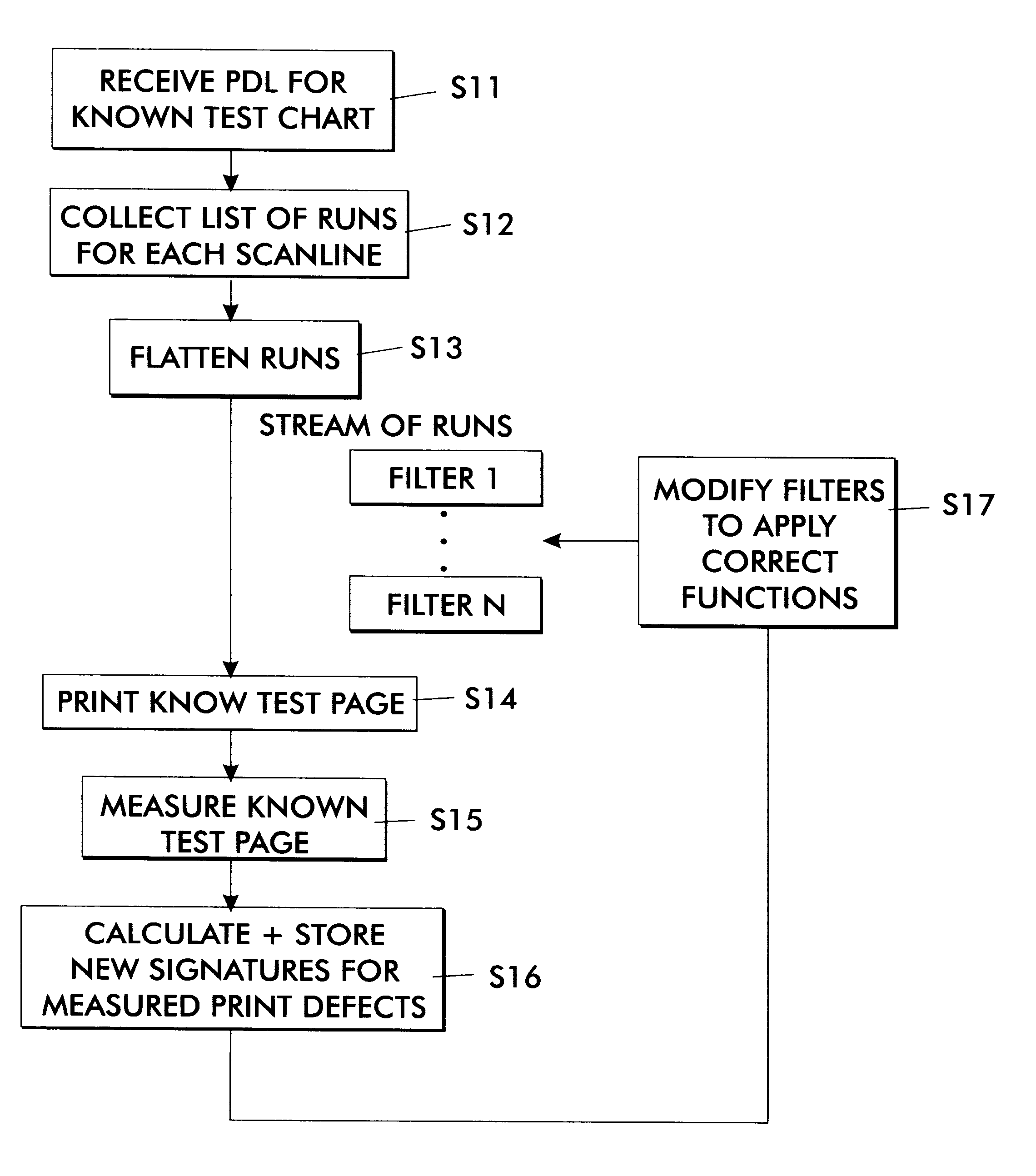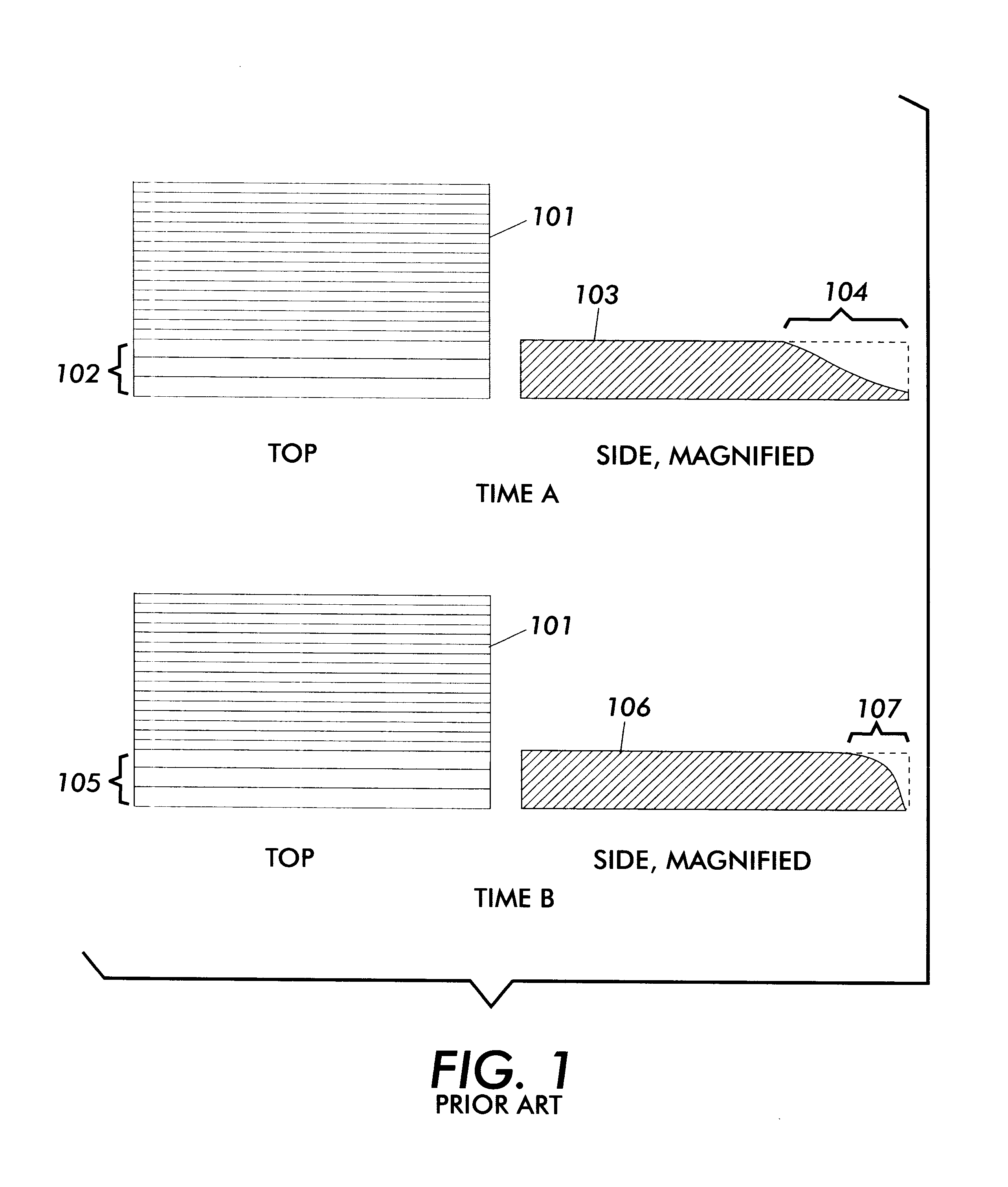Achieving system stability in anamorphic printer defect pre-compensation
a technology of anamorphic printer and defect pre-compensation, applied in the field of high-quality digital printing, can solve the problems of detracting from achieving the highest possible quality color printing, bleeding or spreading of colors and paper distortion, detracting from print quality, etc., and achieves the effect of accurately pre-compensation, effective tracking changes, and increasing overall image quality
- Summary
- Abstract
- Description
- Claims
- Application Information
AI Technical Summary
Benefits of technology
Problems solved by technology
Method used
Image
Examples
Embodiment Construction
The following notation will be used below to designate the two important directions in printing. The letter "S" will be used to designate the Scan direction (the direction of the scanlines); that is, the direction the laser beam or ink jet Scans across a page. The letter "P" will be used to designate, the Process direction (the direction orthogonal to S); that is, the direction the printing Process moves down the page as the laser scans each succeeding line.
FIG. 1 shows an example of a printing problem called trail-edge deletion. This printing problem occurs in some xerographic printing systems whenever there is a color fill which is sufficiently large in the process direction and sufficiently wide in the scan, direction and which terminates on a process direction edge. In these cases, the ink or toner can sometimes fade out at the lower edge, producing an objectionable lightening of color along that process-direction edge.
In the first example in FIG. 1, measured at time "A", a trai...
PUM
 Login to View More
Login to View More Abstract
Description
Claims
Application Information
 Login to View More
Login to View More - R&D
- Intellectual Property
- Life Sciences
- Materials
- Tech Scout
- Unparalleled Data Quality
- Higher Quality Content
- 60% Fewer Hallucinations
Browse by: Latest US Patents, China's latest patents, Technical Efficacy Thesaurus, Application Domain, Technology Topic, Popular Technical Reports.
© 2025 PatSnap. All rights reserved.Legal|Privacy policy|Modern Slavery Act Transparency Statement|Sitemap|About US| Contact US: help@patsnap.com



